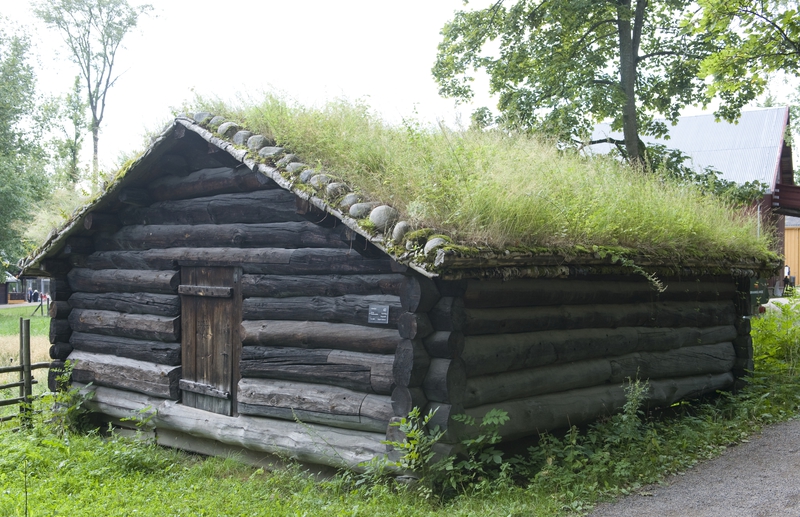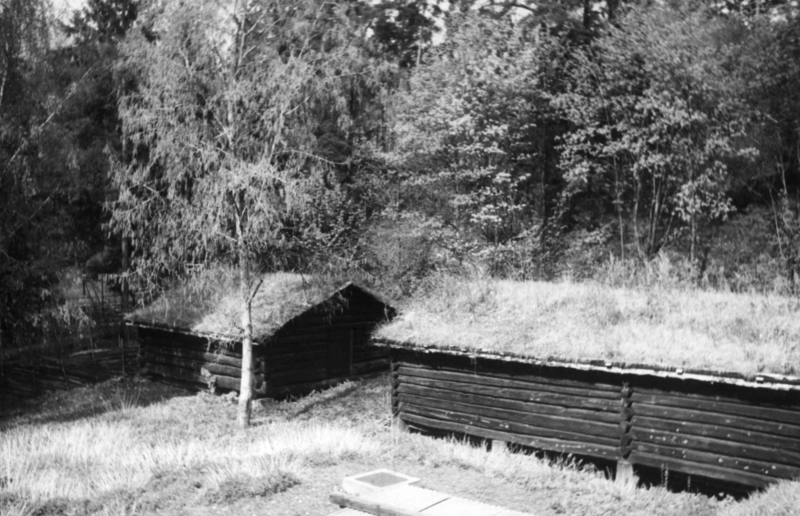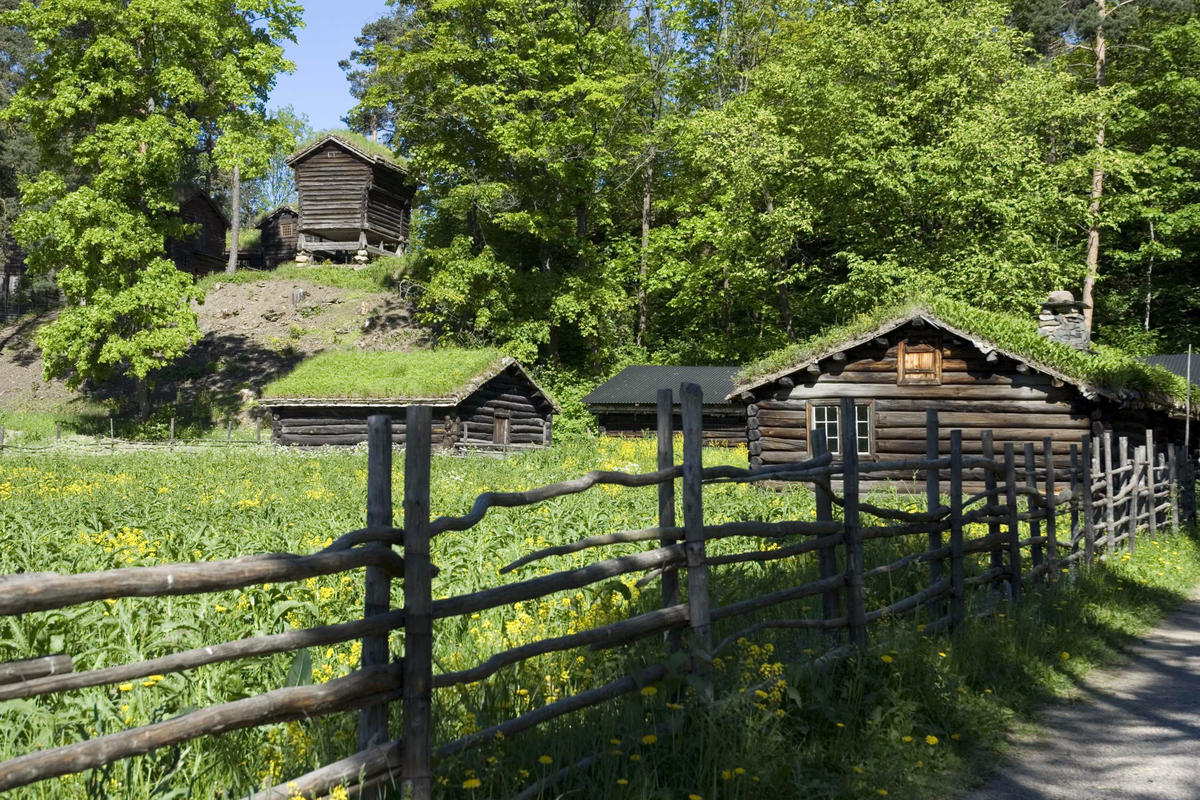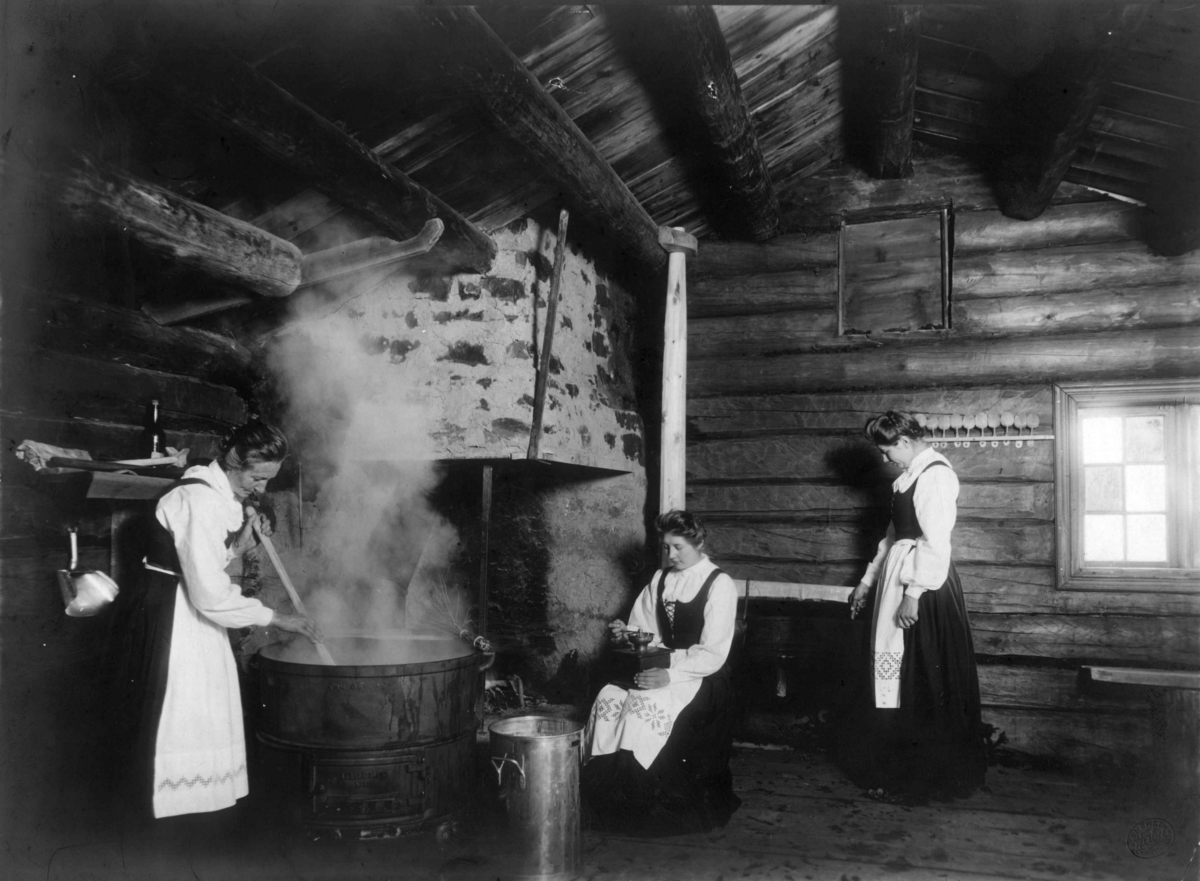- 1/1
The Dairy Farm from Gudbransdalen Anne-Lise Reinsfelt | Norsk Folkemuseum
 Image from digitaltmuseum.org
Image from digitaltmuseum.org Summer dairy farmhouse from Landsverkseter (Nord-Fron, ca. 1800)
The farmhouse has three rooms – a mid-placed entrance with a room on either side. The sel on the right side is where all production of butter and cheese was done, and was also used as living quarters. The milk room, or bu, to the left was used for storing the milk and milk products that the summer dairy farm produced.
 Image from digitaltmuseum.org
Image from digitaltmuseum.org Goat shed from Kleppdalssetra or tjønnsetra (Nord-Fron, ca. 1850)
The origin of this building is slightly unclear. When it came to the museum, it was said to have come from Kleppdalssetra. But that was a hayfield and probably had no buildings. The farm that owned it also owned Tjønnsetra, so it may have stood there. The initials carved on the door are I Ø S L KVAM 1894 and O Ø T Ø KVAM 1844.
 Image from digitaltmuseum.org
Image from digitaltmuseum.org Cow barn from Loftsgård (Sel, ca. 1850)
Cow barns on summer dairy farms were often more simply built and smaller than those on the main farms. The cows spent all day grazing outdoors and were in the barn only for milking and at night. This cow barn is large, with room for many animals.
Summer Dairy Farming
Pastures near the main farm were grazed in the spring and fall. In summer, cows, sheep, goats and in some cases pigs were brought to the summer dairy farm, seter, in the hills or the mountains. In this way, one could make use of the rich and abundant grazing lands farther away from the farm. The production of milk was highest and the quality was best when the herd could eat its fill in lush mountain meadows. When the mountain dairy farm was close enough to the main farm, the milk was brought home daily. Otherwise, one would live on the mountain farm for the summer and process the milk there. Women milked the cows and made cheese and butter. Children watched the herds. The growth of commercial dairies during the last half of the 1800s represented major changes for summer dairy farming. As a result, many summer dairy farmes went out of production.
Gudbrandsdalen
Gudbrandsdalen lies to the east in Oppland County. Its landscape is varied, ranging from mountainous areas to good farming districts. The main valley runs from the northwest and southward along a large river, the Gudbrandsdalslågen.
The old and much-travelled royal highway between Trøndelag and eastern Norway followed the valley. The Jotunheimen Mountains lie to the west and the Rondane Mountains to the east.
Many areas have always had good farming. Utilization of mountain pasturage has allowed for extensive animal husbandry and high-quality dairy products. The most well-known is the «brown» goat’s milk cheese developed in the 1860s.

